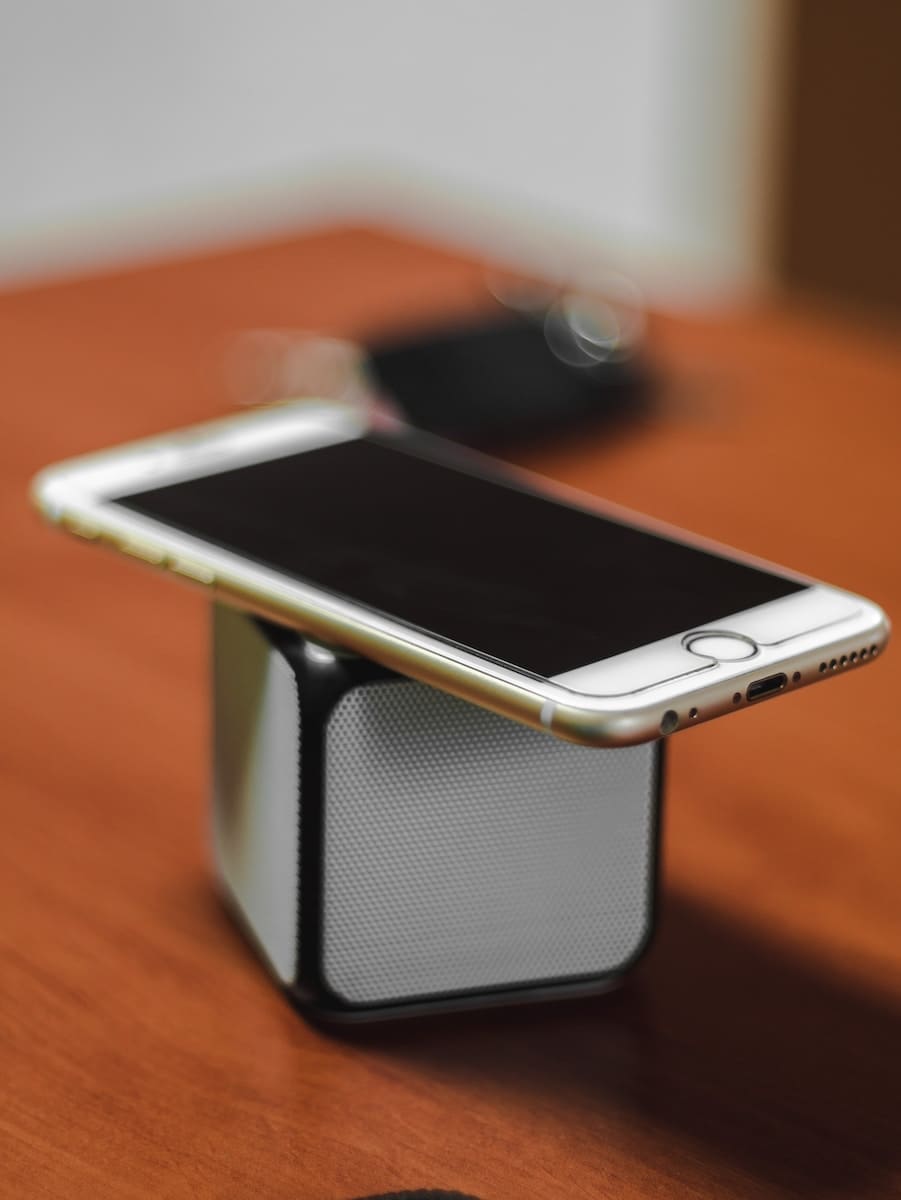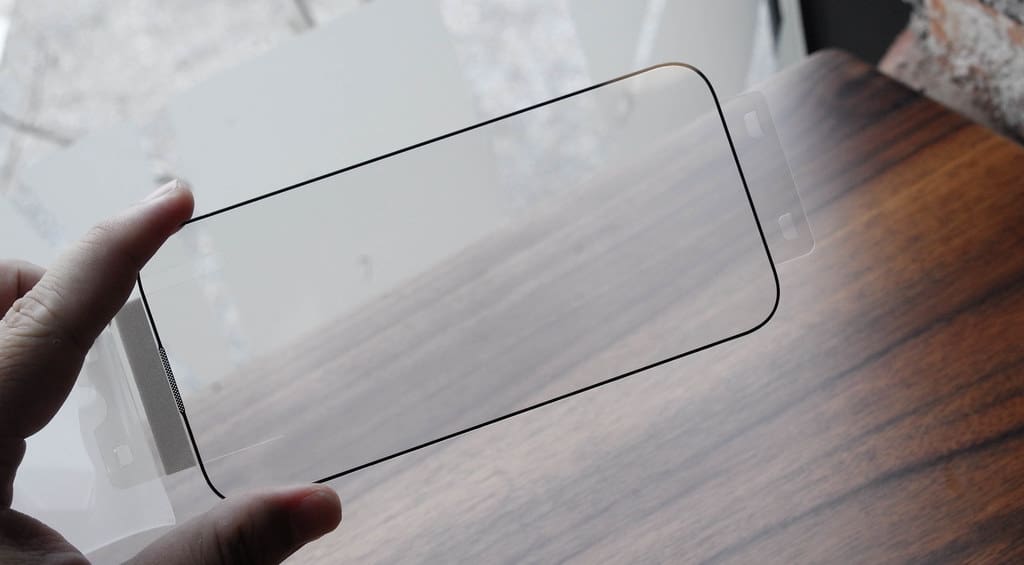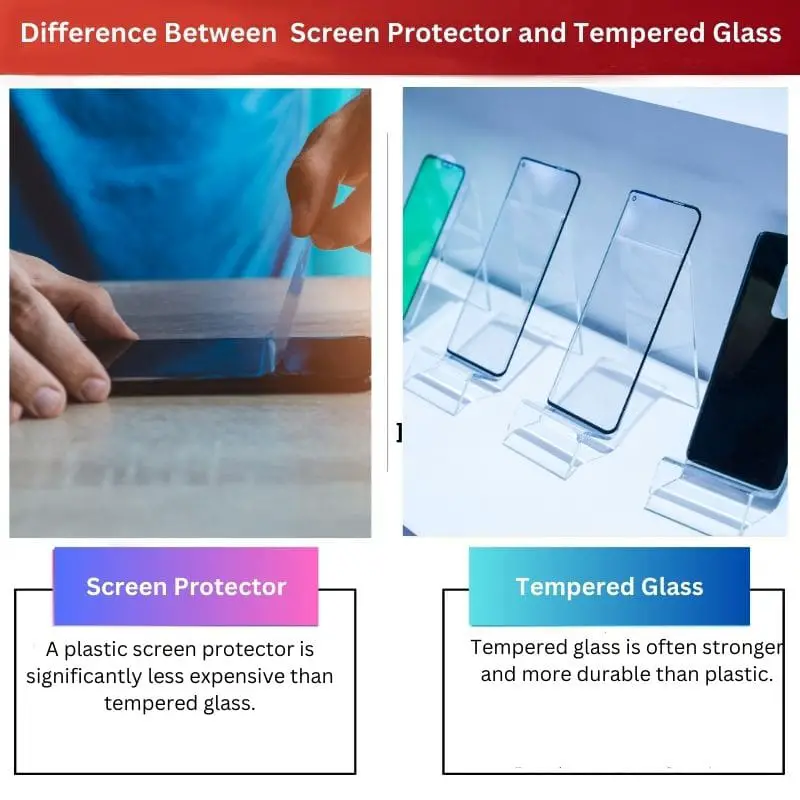A screen guard, also known as a screen protector, is a thin, weightless protective film that attaches to your phone’s screen and is invisible.
Since it is covered with plastic, the screen protector is not brittle.
As Corning focuses on drop protection, a screen shield or protector is an important accessory for every smartphone with Corning glass.
A screen protector can resist scratches and minor drops.
If the scratches are visible on the plastic screen protectors, they are fairly noticeable.
Tempered glass is invisible, sticky, and protective.
As it is made of glass, the level of protection is determined by the thickness of the glass.
Fractures develop in the glass screen over time.
Furthermore, tempered glass breaks easily.
Tempered glass screen protectors are made by rapidly cooling heated glass after considerable heating.
Tempered glass screen protectors include a highly permeable silicone coating, an oleophobic nano-coating, and an anti-shatter layer on top of the tempered glass.
These compressed layers improve tempered glass’s heat and scratch resistance, making it up to five times stronger than ordinary glass.
Tempered glass screen protectors are significantly more robust and long-lasting than the prior.
Key Takeaways
- Screen protectors are thin, flexible films that protect the device screen from scratches, whereas tempered glass protectors are rigid, durable layers that offer greater impact resistance.
- Tempered glass protectors provide a smoother, more natural feel than plastic screen protectors.
- Tempered glass protectors are more expensive than plastic screen protectors but offer superior protection.

Screen Protector vs Tempered Glass
A screen protector is a thin, transparent sheet of plastic or glass that is applied to the surface of a device’s screen to protect it from scratches, cracks, and other types of damage. Tempered glass is a type of screen protector that is heated and cooled rapidly to make it more durable and resistant to breakage.
Comparison Table
| Parameters of Comparison | Screen Protector | Tempered Glass |
|---|---|---|
| Durability | Easily scratched | More robust and durable |
| Look | Less sleek | More pleasant |
| Installation | More tedious | Easier |
| Price | Cheaper | Costly |
What is Screen Protector?
A screen guard, also known as a screen protector, is a thin, weightless protective film that attaches to your phone’s screen and is invisible. It prevents scratches and scuffs. Mostly, it is made of plastic.
Despite being much thinner, they are certainly very effective at preventing displays from scratches. Since it is covered with plastic, the screen protector is not brittle.
A screen protector also provides scratch and fingerprint protection and extra support for Corning Gorilla Glass’ resilience to narrow, accidental drops.
As Corning focuses on drop protection, a screen shield or protector is an important accessory for every smartphone with Corning glass.
A screen protector can resist scratches and minor drops. Combining the two will result in a more outstanding experience on your smartphone.
You may delay getting another phone for a time because most people replace their smartphones on how they look from the outside.
Plastic screen protectors are extremely durable and last much longer. According to studies, hammering or even dumping the plastic screen cover from a height into rocks does not affect it.
Another advantage is that plastic screen covers may be reused. You are always allowed to remove, save, and reuse them.
This feature ensures that they will be used for a long time. If you need to use a waterproof case, you may remove the plastic ones and put on the second one.
Since they are composed of plastic, these protectors lose their clarity with time. When used regularly, they create haziness and make one appear unpleasant.
If the scratches are visible on the plastic screen protectors, they are fairly noticeable.
These are not fingerprint-resistant, so they remain on the screen after you use your phone. It doesn’t appear to be much fun.

No products found.
What is Tempered Glass?
Tempered glass is invisible, sticky, and protective. As it is made of glass, the level of protection is determined by the thickness of the glass.
The major focus is preventing visible cracks on displays, not scratch prevention.
Simply stated, tempered glass extends the life of the above-noted drop protection. Tempered glass, on the other hand, breaks easily and, due to its weight, hits the glass screen every time it falls.
Fractures develop in the glass screen over time. Furthermore, tempered glass breaks easily.
They are the most popular option for people who want to protect the edges of their phone screens.
Tempered glass screen protectors are made by rapidly cooling heated glass after considerable heating. As a result of enduring both intense heat and rapid cooling, the glass becomes significantly stronger.
Tempered glass screen protectors include a highly permeable silicone coating, an oleophobic nano-coating, and an anti-shatter layer on top of the tempered glass.
These compressed layers improve tempered glass’s heat and scratch resistance, making it up to five times stronger than ordinary glass.
They are more expensive than plastic ones but provide better protection for your device. Tempered glass screen protectors are significantly more robust and long-lasting than the prior.
Tempered glass is made from scratch- and oil-resistant Gorilla glass.
Your usage is improved since these screen protectors allow your fingertips to run more smoothly across them.
They are effective in removing excessive oil smudges and fingerprints.

No products found.
Main Differences Between Screen Protector and Tempered Glass
- A plastic screen protector is significantly less expensive than tempered glass.
- Tempered glass is stronger and more durable than plastic. Plastic protectors are readily scratched.
- Plastic screen guards are not as stylish as tempered glass screen protectors. Instead, the tempered glass enhances the appearance of your smartphone.
- Plastic screen guards are far more difficult to install than tempered glass screen protectors.




